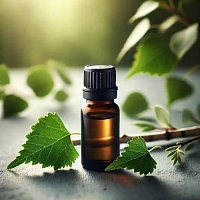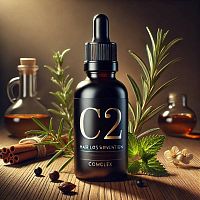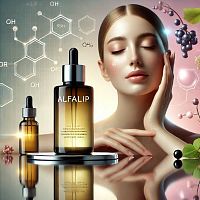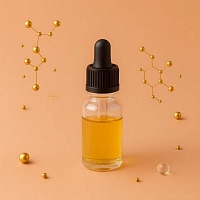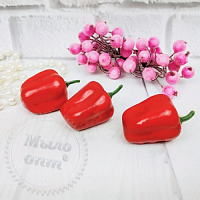-
 Absolutes
Absolutes
-
 Active Complexes
Active Complexes
-
 Actives and Peptides for Cosmetics
Actives and Peptides for Cosmetics
-
 Amino Acids
Amino Acids
-
 Food Flavorings
Food Flavorings
-
 Ayurveda
Ayurveda
-
 Vitamins
Vitamins
-
 Gelling Agents and Thickeners
Gelling Agents and Thickeners
-
 Hydrosols and Floral Waters
Hydrosols and Floral Waters
-
 Hydrolyzed Proteins
Hydrolyzed Proteins
-
 Fragrant and aromatic substances
Fragrant and aromatic substances
-
 Acids, Salts, Alcohols, and Alkalis
Acids, Salts, Alcohols, and Alkalis
-
 Preservatives and Antioxidants
Preservatives and Antioxidants
-
 Cosmetic Raw Materials
Cosmetic Raw Materials
-
 Dyes, Pearlescents, and Glitters
Dyes, Pearlescents, and Glitters
-
 Face Masks, Scrubs, and Dried Flowers
Face Masks, Scrubs, and Dried Flowers
-
 Oils, batters, macerates, oil mixtures
Oils, batters, macerates, oil mixtures
-
 Candle Supplies
Candle Supplies
-
 Melt and Pour Soap Bases
Melt and Pour Soap Bases
-
 Base for cosmetics, cream, serum, shampoo
Base for cosmetics, cream, serum, shampoo
-
 Fragrance Oils
Fragrance Oils
-
 Surfactants
Surfactants
-
 Peelings for Skin
Peelings for Skin
-
 Herbal Powders and Plant
Herbal Powders and Plant
-
 Silicones and Conditioning Surfactants for Hair
Silicones and Conditioning Surfactants for Hair
-
 Raw materials for dietary supplements
Raw materials for dietary supplements
-
 Packaging for Cosmetics and Perfumes
Packaging for Cosmetics and Perfumes
-
 Molds, Packaging, Tools
Molds, Packaging, Tools
-
 Organic Extracts
Organic Extracts
-
 Emollients for Cosmetics
Emollients for Cosmetics
-
 Emulsifiers
Emulsifiers
-
 Essential Oils
Essential Oils
Borax Decahydrate (Sodium Tetraborate Decahydrate): Versatile Ingredient for Cosmetic Formulations
Discover the multifaceted applications of Borax Decahydrate (Sodium Tetraborate Decahydrate) in your cosmetic creations. This hydrated form of sodium borate, a naturally occurring mineral salt, offers a range of functional properties that can enhance the performance and texture of various cosmetic and personal care products. While traditionally known for other applications, its unique characteristics make it a valuable ingredient for specific cosmetic uses when incorporated responsibly and at appropriate concentrations.
Applications and Areas of Use in Cosmetics:
Borax Decahydrate can be utilized in cosmetic formulations for its buffering, emulsifying, thickening, and cleansing properties, contributing to the desired texture, stability, and efficacy of the final product:
- Emulsifying Aid: In certain emulsion systems (mixtures of oil and water), borax can react with fatty acids (like stearic acid) to form soaps in situ. These soaps act as emulsifiers, helping to stabilize the emulsion and prevent the separation of oil and water phases in creams, lotions, and other emollient products.
- Buffering Agent: Borax can help to maintain the pH of cosmetic formulations within a desired range. This buffering capacity is crucial for the stability of other ingredients and for ensuring the product is gentle and compatible with the skin's natural pH.
- Thickening Agent: When used in conjunction with certain gums or polymers, borax can act as a cross-linking agent, increasing the viscosity and providing a thicker consistency to gels, creams, and other viscous formulations. This effect is often seen in "slime" formulations, though its use in mainstream cosmetics for thickening is less common and requires careful formulation.
- Cleansing Agent (Indirectly): Due to its ability to react with fats and oils to form soap-like substances, borax can contribute to the cleansing action of certain products like some traditional cleansers or when used in specific DIY formulations. However, it is generally not used as a primary surfactant in modern cosmetics due to its alkalinity.
- Preservative Booster: Borax has mild antimicrobial properties and can potentially enhance the effectiveness of other preservatives in cosmetic formulations, contributing to the overall shelf-life and safety of the product. However, it is not typically used as a standalone preservative.
- Traditional Remedies (Limited Use): In some traditional or DIY beauty practices, very dilute solutions of borax have been used for purposes like eyewashes or skin cleansers. However, these uses are not widely recommended by mainstream cosmetic science due to potential irritation and the availability of safer, more effective alternatives. It is crucial to emphasize caution and adherence to safe usage levels if considering such applications.
Key Benefits for Cosmetic Formulations (with careful consideration of safety and concentration):
- Aids Emulsification: Can contribute to the stability of oil-in-water emulsions when reacted with fatty acids.
- Provides Buffering Capacity: Helps maintain the desired pH of cosmetic products.
- Can Enhance Viscosity: Acts as a cross-linking agent with certain polymers to thicken formulations.
- May Offer Mild Antimicrobial Properties: Can potentially boost the efficacy of other preservatives.
- Traditional Uses (with extreme caution): Historically used in very dilute solutions for specific cleansing purposes (not widely recommended).
- Global Shipping: Our online store offers delivery worldwide, making this ingredient accessible globally.
Cosmetic Recipe: Simple Emulsifying Cream (Illustrative - Requires Careful pH Monitoring)
Note: This recipe is illustrative and involves an in situ soap formation. It requires careful pH monitoring and adjustment to ensure skin compatibility. It is not a standard modern formulation and is presented to demonstrate the emulsifying property of borax.
| Ingredient | Percentage (%) |
|---|---|
| Distilled Water | 70% |
| Mineral Oil | 20% |
| Stearic Acid | 5% |
| Borax Decahydrate | 0.5% |
| Preservative (e.g., Phenoxyethanol) | 1% |
| Fragrance Oil (optional) | 0.5% |
| pH Adjuster (e.g., Citric Acid solution) | q.s. to pH 5.5-7.0 |
Instructions:
- In a heat-safe beaker, combine the distilled water and borax decahydrate. Heat to 70-75°C (158-167°F), stirring until the borax is completely dissolved.
- In a separate heat-safe beaker, combine the mineral oil and stearic acid. Heat to 70-75°C (158-167°F), stirring until the stearic acid is melted.
- Slowly pour the oil phase into the water phase while continuously stirring with a stick blender or whisk. Continue stirring for several minutes until a smooth emulsion forms. The borax will react with the stearic acid to create an emulsifying soap.
- Remove from heat and continue stirring gently as the cream cools down.
- Once the cream has cooled to below 40°C (104°F), add the preservative and fragrance oil (if used), stirring gently until fully incorporated.
- Crucially, measure the pH of the cream using a pH meter or accurate pH strips. Adjust the pH to be within the range of 5.5-7.0 using a diluted citric acid solution (or another suitable pH adjuster) added drop by drop while stirring.
- Transfer the cream to a clean container.
Application Recommendations:
- Use with Extreme Caution: Borax is alkaline and can be irritating to the skin and eyes, especially at higher concentrations. Always use it at very low concentrations in cosmetic formulations.
- Strict Adherence to Safe Usage Levels: Research and adhere to established safe usage levels for borax in cosmetic products. Regulatory guidelines in different regions may vary.
- Thorough pH Monitoring: When using borax in formulations, especially those intended for skin contact, meticulous pH monitoring and adjustment are essential to ensure the final product is safe and skin-compatible (typically within the pH range of 4.5 to 7.0, ideally slightly acidic).
- Avoid Direct Application: Never apply borax directly to the skin or use it in high concentrations in DIY remedies without thorough research and understanding of the risks.
- Not for Eye Products (Generally): Due to potential irritation, borax is generally not recommended for use in eye care products unless at extremely low and carefully controlled concentrations, and only when there are specific functional benefits and no safer alternatives.
- Consider Alternatives: For many cosmetic functions (like primary emulsification or preservation), there are safer and more effective modern ingredients available. Consider borax only when its specific properties are uniquely beneficial and when it can be used safely and responsibly.
- Consult Safety Data Sheets (SDS): Always consult the Safety Data Sheet (SDS) for Borax Decahydrate for detailed safety information, handling precautions, and regulatory guidelines.
It is imperative to emphasize the need for careful formulation, thorough testing, and adherence to safety guidelines when using Borax Decahydrate in cosmetic products due to its potential for irritation at higher concentrations and alkaline pH.
And also go to the Blog from Мыло Опт, where we share useful information about creating the right natural cosmetics
| INCI | Sodium Tetraborate Decahydrate | |
| Other | ||
| Attention | THE PRICE IS INDICATED FOR 1 KG WHEN PURCHASING FROM 25 KG | |
| Color product | white or colorless | |
| Features | All information presented on the site is for reference only | |
| Input percentage | косметические средства — не более 5%. Развести в горячей (75°С) воде, после ввести в крем; в лечебных целях применяют в виде 3-5% раствора для промываний и смазываний полости рта, носа и носоглотки при различных инфекционных заболеваниях (трахеит, насморк, стоматит и др.) | |
| Minimum count | 25 | |
| Name | Borax 10-hydrate (sodium tetraborate) 25 kg | |
| Packaging | container for transportation | |
| Packing | 25 kg | |
| Solubility | easily in water (2: 1 in hot) and glycerin, insoluble in alcohol | |
| View | fine crystalline powder | |
| Valid until | 06.2027 | |
-
Date:8 DecemberAuthor:Валентина, УтрехтReviews
Ваша продукция непревзойденная!









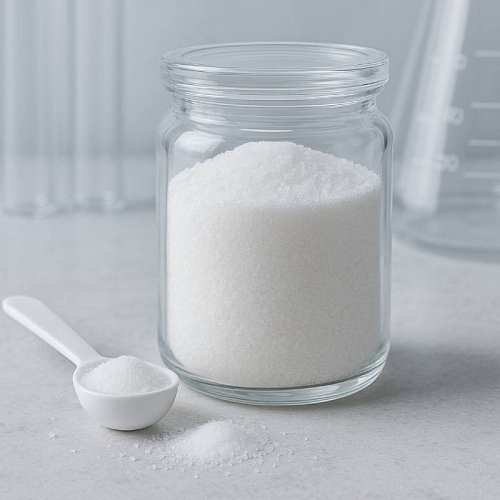
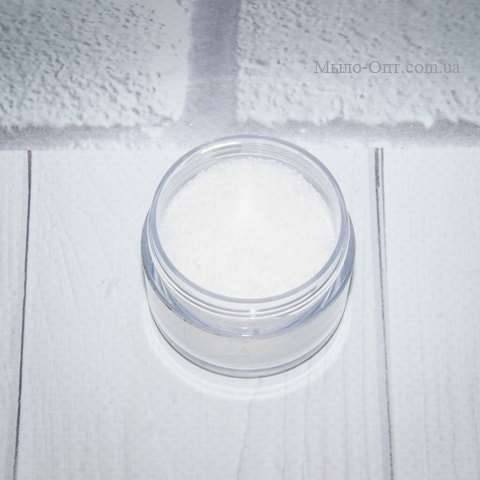
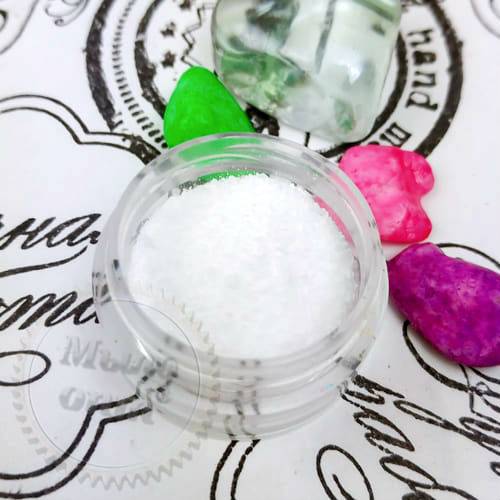



 Add to cart
Add to cart Buy in 1 click
Buy in 1 click

 Add a review
Add a review To favorites
To favorites To compare
To compare






